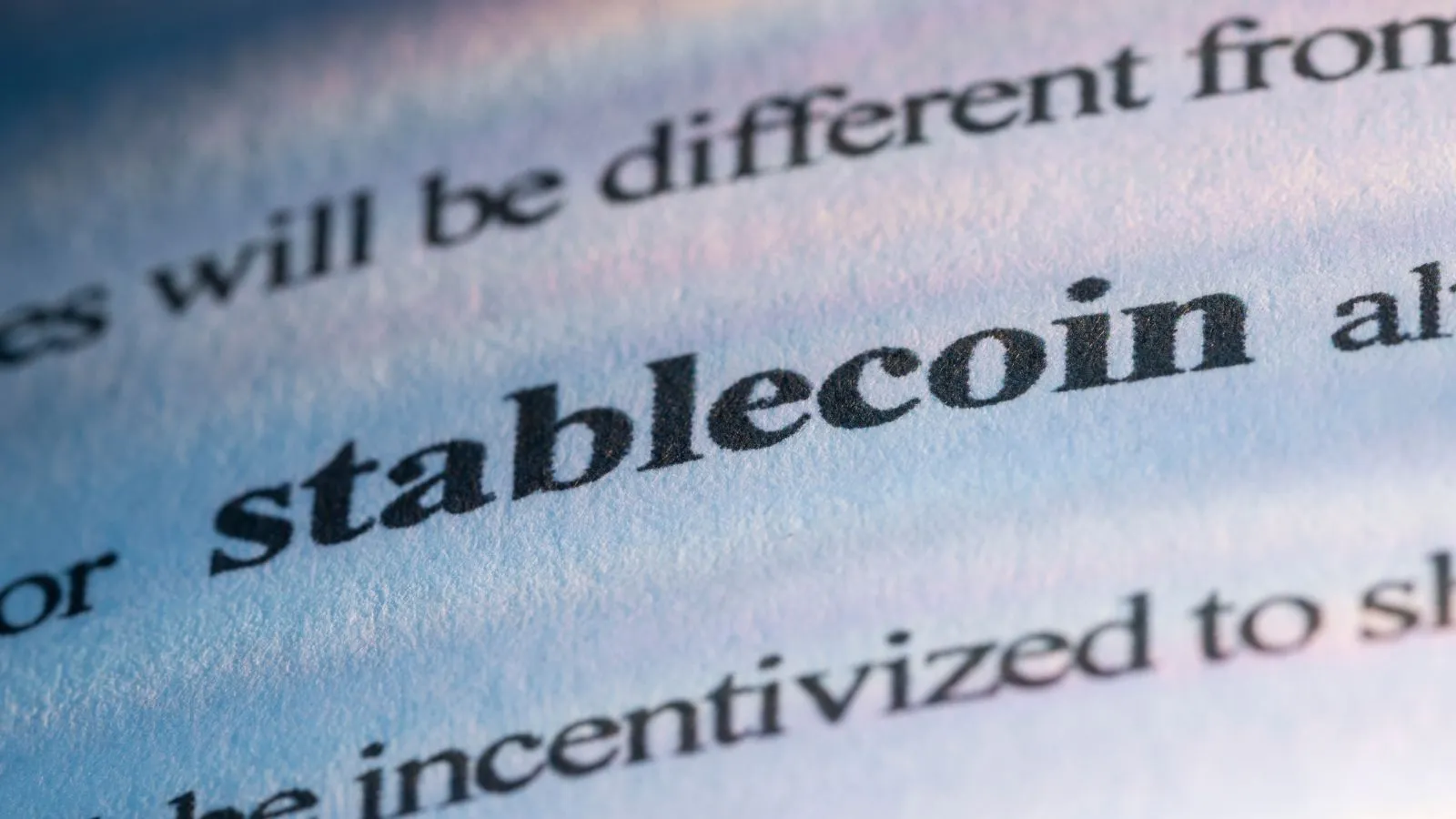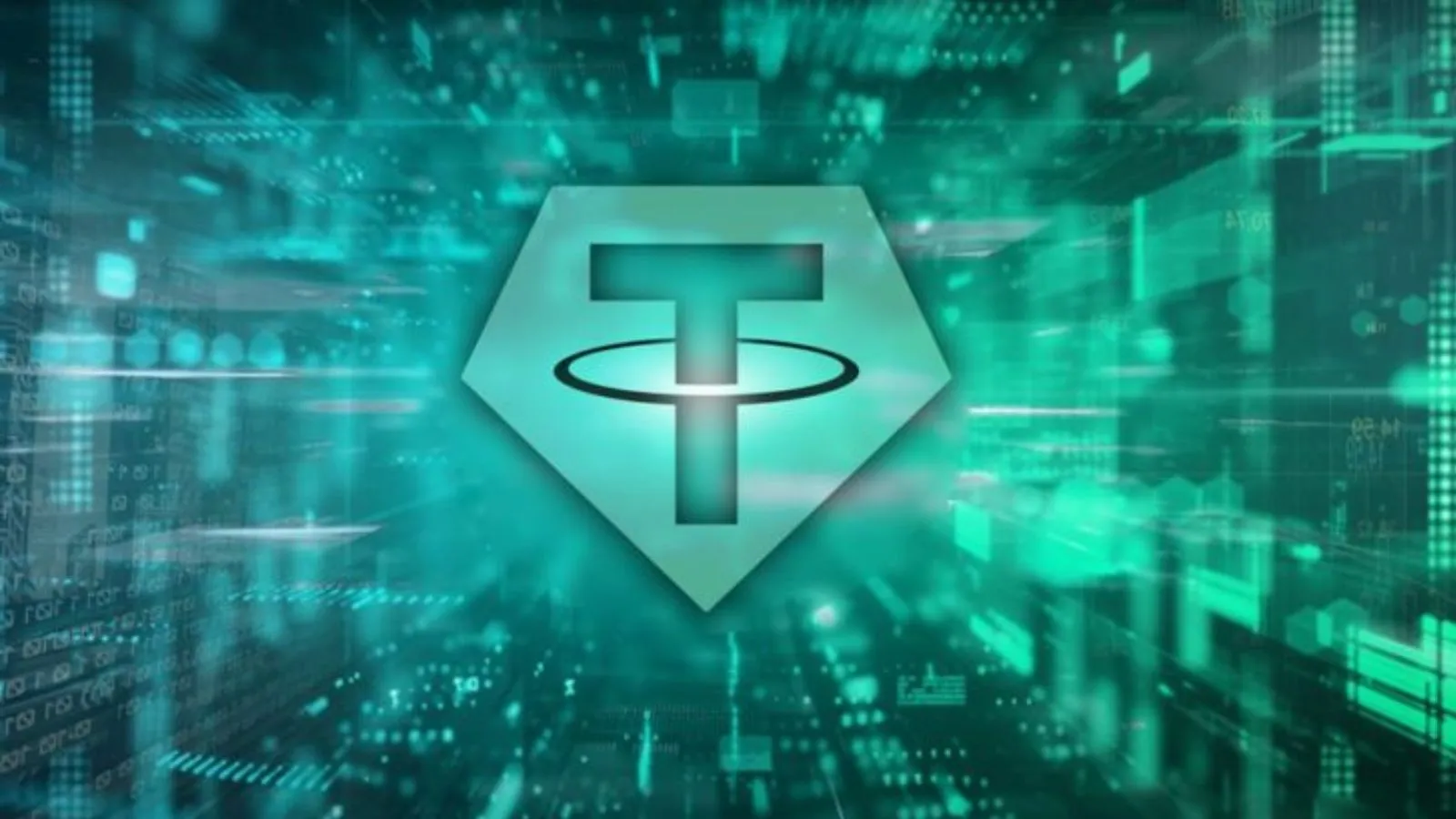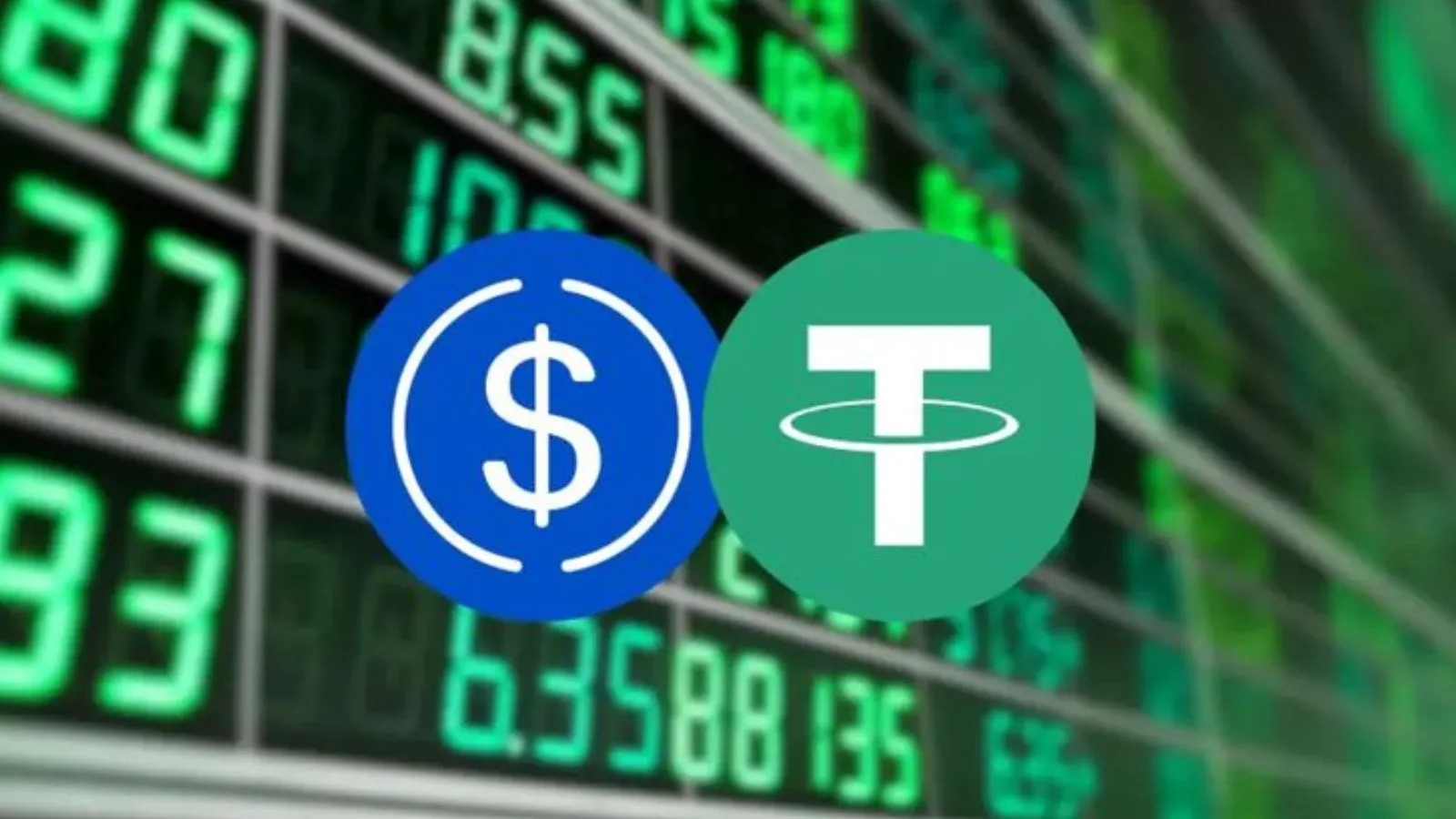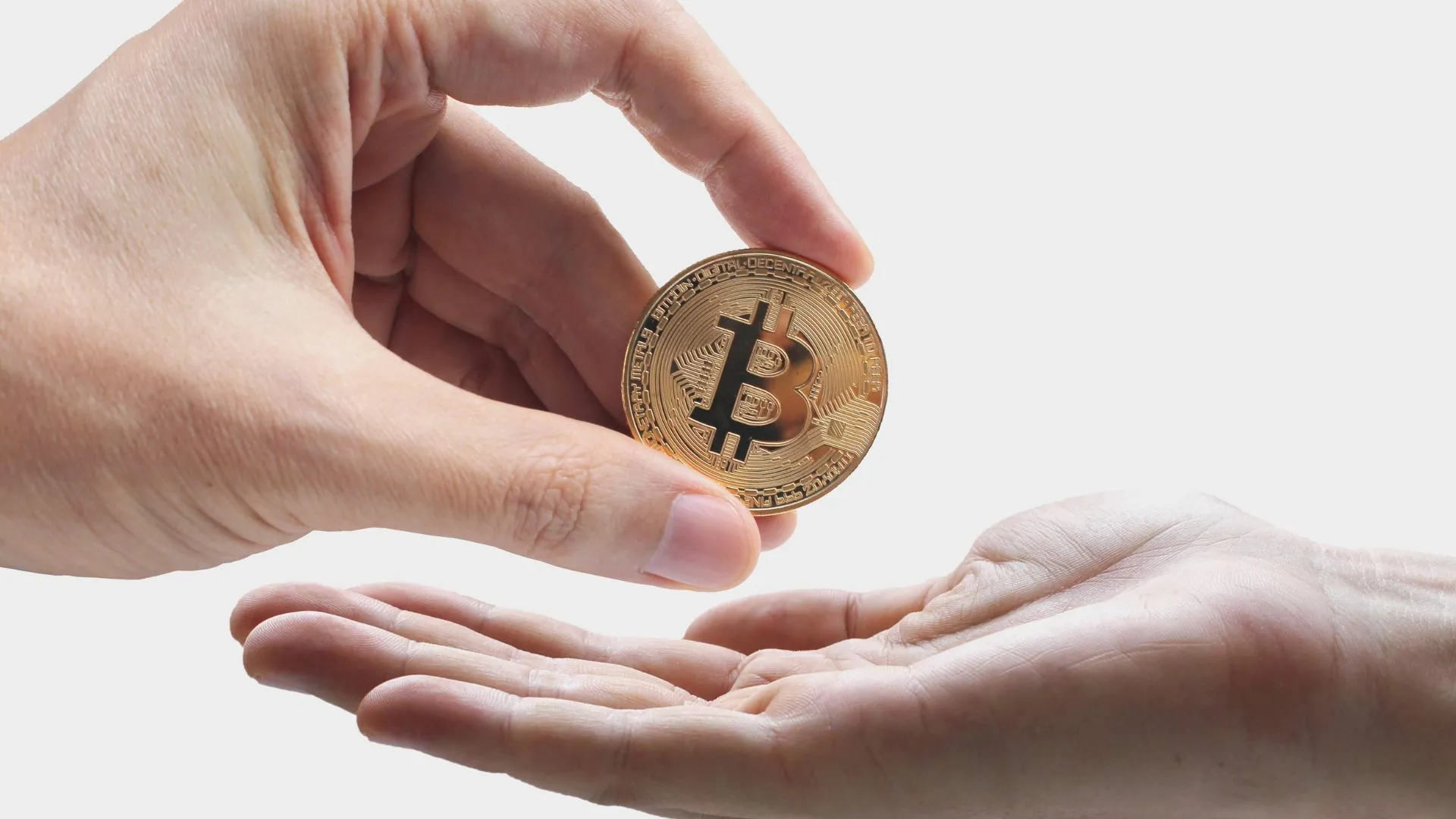Imagine a world where the wild roller coaster of cryptocurrency volatility is tamed, allowing you to enjoy the speed and innovation of digital money without constantly worrying about its value crashing overnight.
Enter stablecoins — a unique breed of cryptocurrency designed to offer the best of both worlds: the stability of traditional money and the flexibility of digital assets.
Among these, Tether stands out as one of the most talked-about and widely used. But what exactly are stablecoins, and why is Tether so important in the crypto space?
Let’s dive into the fascinating world of stablecoins and uncover the role Tether plays in it all.
What Are Stablecoins?
Stablecoins are a unique type of cryptocurrency, specifically designed to address one of the biggest concerns in the crypto world: volatility. If you’ve ever followed the ups and downs of Bitcoin or Ethereum, you know how wildly their prices can swing.
Stablecoins aim to smooth out those wild price fluctuations by pegging their value to something more predictable, often a fiat currency like the US dollar.
Think of stablecoins as a bridge between the traditional financial world and the rapidly evolving landscape of cryptocurrencies.
Unlike regular cryptocurrencies, whose values can rise or fall dramatically within a short time, stablecoins are designed to maintain a consistent value. This makes them an attractive option for people who want to use digital currencies without worrying about sudden price drops.
How Do Stablecoins Work?
Stablecoins have managed to achieve this stability mainly by being backed by real-world assets and using an algorithmic control of supply. By far, the most popular peg for these is against fiat money, meaning for every unit of the stablecoin on issue, a matching exact equivalent will be held in reserve.
For example, a stablecoin may be targeting the United States dollar by keeping its price as close to $1.00 as possible, regardless of the events in the rest of the cryptocurrency market.
There are several different types of stablecoins: fiat-collateralized, crypto-collateralized, and algorithmic. Fiat-collateralized stablecoin is where, like Tether, every unit is directly backed by a reserve of real-world currency.
Crypto-collateralized stablecoins are when other cryptocurrencies back it, while in algorithmic stablecoins, smart contracts are used to manage the supply and demand that keeps the value without any physical backing.

What Is Tether (USDT)?
Of all stablecoins existing right now, Tether is one of the oldest at the moment and definitely the most popular and used one.
Launched in 2014, Tether has blockchain behind it and is pegged to the US dollar, meaning that one Tether always equals one US dollar. This 1:1 ratio is maintained through the holding of reserves in fiat currency, which is backing the value of the Tether tokens.
Tether was created by combining the best of both digital currencies, such as fast processing and minimal charges, and traditional money, in order to provide the overall needed stability.
This hybrid nature enables users to derive all the good parts of cryptocurrency, such as convenience, without being concerned about price fluctuations.
Why Is Tether So Popular?
Tether has become a cornerstone in the cryptocurrency market, particularly among traders and investors. Its stability is a key reason for its popularity. In a market known for its volatility, Tether offers a safe haven where you can park your funds without worrying about losing value.
This is especially useful during market downturns when traders want to exit more volatile cryptocurrencies like Bitcoin but don’t want to convert their holdings back into traditional fiat currencies.
Tether is also widely used for transferring value between different exchanges quickly and with lower fees than traditional bank transfers.
Because Tether is a cryptocurrency, it can move as fast as any other digital asset, making it a convenient tool for those who need to move large amounts of money across different platforms or even internationally.
How Is Tether Used?
Tether does a few things within the cryptocurrency space. Being a simple and broadly accepted trading pair on many exchanges is one of its primary uses. When traders sell and buy cryptocurrencies, they mostly do so against stablecoins such as Tether instead of directly against the fiat currency.
They are able to stay within the crypto ecosystem yet still deal with a stable asset by doing this.
Tether is also used to transfer funds between exchanges or from a wallet to an exchange. Since it is a stablecoin, its value doesn’t fluctuate like other cryptocurrencies, making Tether a reliable choice for moving money around without losing value in the process.
Tether is a way that allows one to store their money in the crypto space without having to expose it to the risks of market volatility. This is quite helpful for someone willing to stay within the crypto ecosystem while waiting for the right moment to invest in more volatile assets.

How Are Stablecoins Created and Are They a Good Idea?
Stablecoins like Tether are created to provide the benefits of cryptocurrency — such as speed, decentralization, and ease of transfer — while avoiding the volatility that makes many digital currencies difficult to use for everyday transactions.
But how do they maintain their stable value?
Methods of Maintaining a Stablecoin’s Value
There are a few different methods used to keep stablecoins pegged to their value:
- Fiat Collateralization: This is the most common method, where the stablecoin is backed by an equivalent amount of a fiat currency held in reserve. For example, Tether claims that each USDT is backed by one US dollar held in reserve. The idea is that this collateral ensures the stablecoin’s value remains tied to the fiat currency.
- Crypto Collateralization: Some stablecoins are backed by other cryptocurrencies rather than fiat. This method is transparent, as the collateral can be viewed on the blockchain. However, because cryptocurrencies can be volatile, these stablecoins often require more collateral than the value they are backing to account for price fluctuations.
- Algorithmic Pegging: Some stablecoins use algorithms to control the supply of the coin in circulation. If the stablecoin’s price begins to rise above its peg, the algorithm creates more coins to bring the price back down. Conversely, if the price falls, the algorithm reduces the supply. This method does not require collateral, but it relies heavily on the algorithm’s ability to manage supply and demand effectively.
Popular Stablecoins in the Market
In the ever-evolving world of cryptocurrencies, stablecoins have carved out a significant niche. These digital currencies offer a solution to one of the major challenges in the crypto market: volatility.
By maintaining a stable value, stablecoins provide a reliable option for those looking to trade or hold assets in the digital world without the wild price swings seen with other cryptocurrencies.
Let’s dive into some of the most popular stablecoins that have made their mark in the market.
USDT (Tether)
USDT, commonly known as Tether, is perhaps the most well-known stablecoin out there. Launched in 2014, Tether was one of the first stablecoins to be introduced, and it quickly became a staple in the cryptocurrency world.
Tether is a fiat-collateralized stablecoin, meaning it is backed by traditional currency — in this case, the US dollar. For every USDT token in circulation, there’s supposed to be an equivalent amount of US dollars held in reserve.
What makes Tether so popular is its widespread use across various crypto exchanges. Traders often use USDT as a substitute for actual dollars, allowing them to stay within the cryptocurrency ecosystem without having to convert back to fiat currency.
This convenience, combined with Tether’s long-standing presence in the market, has helped it maintain its position as one of the most used stablecoins.

TUSD (TrueUSD)
TrueUSD, or TUSD, is also a fiat-collateralized stablecoin, although with one key difference: transparency. While Tether has long been criticized due to a general lack of transparency on its reserves, TrueUSD aims to change that.
The backing in fiat currency lives in the accounts of multiple trust companies, which publish these balances on a daily basis and audit them monthly.
This has helped TrueUSD become very attractive to investors concerned about the legitimacy of the reserves backing up their stablecoin coins.
For investors concerned with trust and transparency, TUSD is a much more transparent alternative to the stability of dollar-pegged cryptocurrency.
GUSD (Gemini USD)
Gemini USD, or GUSD, is developed by the Gemini Exchange, a product of the Winklevoss twins. Unlike other stablecoins, GUSD is considered to be the first in the line of secure, genuinely regulatory-backed stablecoins.
This means that GUSD is overseen by financial regulators and has adherence to the strictest compliance standards in the world.
This, added to the fact that there is additional regulatory oversight, leaves GUSD the higher security and trust it will hold, very appealing to both individual investors and institutional participants.
Similar to other stablecoins, GUSD is also pegged to the US dollar, which gives a very stable and reliable position for those who would like to hold digital assets without the risk of volatility.
USDC (USD Coin)
The other heavyweight in the stablecoin market is USD Coin, otherwise known as USDC. It was created by two major actors within the cryptocurrency space: Circle and Coinbase.
Similar to TUSD, USDC is also a fiat-collateralized stablecoin that puts a great deal of emphasis on transparency and compliance with regulators.
Another major feature of USDC is its commitment to frequent audits and transparent reporting. All the reserves backing USDC are maintained within USA-regulated financial institutions, and reserve details have been disclosed regularly.
This helped USDC in building up its reputation as a reliable and trustworthy stablecoin, thus becoming one of the more popular choices among traders and investors alike.
DAI
Of all the stablecoins we discussed, DAI stands out—it differs in how it keeps its value.
The DAI is a crypto-collateralized stablecoin, which means that it’s not by a fiat currency but by other cryptocurrencies, as opposed to being outright collateralized by traditional money.
DAI was created by MakerDAO and is pegged to the US dollar but collateralized by a mix of other cryptocurrencies such as Ethereum. A complex system of smart contracts on the Ethereum blockchain maintains DAI’s value by automatically adjusting its supply to keep the price stable.
This decentralized approach to stability forms part of the selling points for DAI. For those believing in the principles of decentralization and seeking to avoid the traditional banking system, DAI is certainly a unique and very interesting option.
On the other hand, the complexity of DAI’s underlying mechanisms most probably makes it a bit more difficult to understand and use compared to fiat-collateralized stablecoins.

The Challenges and Criticisms of Stablecoins
Stablecoins have carved out a unique space in the cryptocurrency market by offering the stability of traditional currencies while maintaining the flexibility of digital assets.
But, like any financial instrument, they are not without their challenges and criticisms. While stablecoins promise a lot, there are underlying issues that both users and regulators are increasingly concerned about.
Let’s take a closer look at some of the key challenges stablecoins are facing today.
Maintaining the Peg: A Constant Struggle
One of the very basic promises of stablecoins is to maintain a stable value, often pegged to a fiat currency like the US dollar. At times, this peg is not always easy to maintain. Throughout history, the best-intentioned pegs have buckled under the pressures of the market.
Take a peg of the Swiss Franc to the Euro or the U.S. dollar to gold; both were pegged to maintain stable exchange rates. Well, they collapsed due to the weight and reality of economies. Stablecoins face the same risk. If the value of the assets that back a stablecoin falls or there is a sudden surge in demand to redeem the stablecoin for actual currency, then the peg can break.
This means that when such a situation happens, it is not only the stablecoin value that goes down but also affects the confidence in the whole system of stablecoins.
That is quite a lot for those who rely on stablecoins as a store of value.
Centralization: A Thorn in the Side of Decentralization
The concept of decentralization shaped the design of cryptocurrencies, ensuring that no single entity controls the currency. However, centralized organizations run many stablecoins, including well-known ones like Tether and USDT.
These companies would hold the reserves backing the stablecoin and would control the processes of issuance and redemption. While centralization grants a fraction of security and stability, it consequently leads to questions regarding transparency and trust.
How does one know the reserves actually exist? Is the company really solvent, or was it subject to the very same risk factors as any traditional bank?
Centralized control over stablecoins makes them very prone to government regulation and even interference, contrary to the decentralized way in which things used to be with these very cryptocurrencies that had made them so attractive in the first place.
Regulatory Scrutiny: A Growing Concern
Regulation is a problem most stablecoins have to wrestle with. As these digital currencies grow in popularity, they are increasingly coming under the watchful eyes of governments and financial regulators around the world.
To many governments, the idea of private companies creating assets that would in effect mimic national currencies without stringent oversight is a little troubling.
The Basis stablecoin was expected to be a big success, but it was shut down because of worries about following the rules. This shows that there are risks when operating in a gray area of regulations.
Governments could crack down on stablecoins that they see as either rivals to their monetary systems or as a vehicle for money laundering. This may lead to a host of future issues for some stablecoins in the form of restrictions, fines, or even forced closures, which would put them under a dark shadow.

The Future of Stablecoins
Stablecoins have carved out a unique niche in the cryptocurrency landscape, offering a much-needed solution to one of the biggest challenges in the market: volatility.
For many traders and investors, stablecoins provide a way to keep their money in the crypto ecosystem without constantly worrying about sudden price swings.
The future of stablecoins is a topic of ongoing debate, with questions about their long-term relevance and sustainability.
The Role of Stablecoins Today
Stablecoins, such as Tether, currently play a big role in the crypto market. They act as a bridge between the traditional finance world and digital currency, helping people move money in and out of crypto assets more easily without the hassle of converting back to fiat currency.
This will be of great help when traders intend to shift funds quickly from one cryptocurrency or exchange to the other.
They also serve as a refuge in times of turbulence in the markets. Many investors, therefore, run for cover in stablecoins in such cases when the value of cryptocurrencies, particularly Bitcoin and Ethereum, begins to swing violently and wildly; they do this to preserve their value.
This possibility of remaining averse to volatility without leaving the crypto space is one major reason for the popularity of stablecoins.
Challenges Ahead
Stablecoins do not lack challenges despite their current popularity. The major question that crops up is whether they will manage to retain their value over an extremely long period.
Unlike traditional currencies — backed by central banks and governments—keeping the value of stablecoins until the very end relies on a variety of mechanisms.
While some are collateralized by reserves of real-world assets, others rely on complex algorithms in order to keep the prices of the tokens in check.
It’s not always easy to maintain these pegs, and this can prove very challenging during times of turbulence in the markets. If a stablecoin loses its peg to the currency it is supposed to track, then the latter may swiftly lose its value, tending to trigger a loss of faith among its users.
That’s quite a risk, particularly to stablecoins collateralized by assets whose value is able to fluctuate, as other cryptocurrencies are.
A major challenge is that one company or organization controls most of the popular stablecoins, making them centralized. This contrasts with the essence of most cryptocurrencies, which are meant to be decentralized.
At this point, the question is on transparency and trust. The user has to put blind faith in these organizations to manage the reserves backing the stablecoin and to act responsibly while issuing and redeeming the coin.
Next is the challenge of regulatory scrutiny: as stablecoins grow in popularity, they are drawing the attention of governments and regulators around the world.
Some regulators are afraid that stablecoins can be used for money laundering or tax evasion; others worry about the impact of privately issued currencies on national monetary systems.
This could result in increased calls for stricter regulation over stablecoins and could consequently limit their growth and future use.
The Uncertain Future
What is in the future for stablecoins? It’s hard to say for sure. On one hand, stablecoins are likely to be part of the core crypto ecosystem for the near future. So long as the market stays volatile, there will be a need for a stable store of value within the digital currency space.
However, the role of stablecoins may change as the cryptocurrency market matures. In case the market becomes less volatile, the demand for stablecoins will reduce. When governments and central banks consider digital currencies, stablecoins may experience strong competition or just become irrelevant.
Stablecoins, as exemplified by Tether, have proved they can provide a very useful service in the market of today. They offer a way through which the positive aspects of digital currencies are enjoyed while avoiding price swing risks. They also introduce another set of problems, including value maintenance, centralization, and regulatory concerns.
It will be pretty compelling to watch how stablecoins adjust to an evolving market and if they are going to remain big parts of the future in finance. Will they stay on as key players within the crypto ecosystem, or at some point be replaced by other innovations?
Only time can tell.




Recent Comments